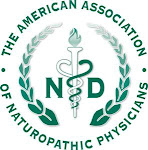Hamantaschen. Photo by stu_spivack via Flickr, used under the Creative Commons License.
Our dog Poppy was named on the 14th day of the Hebrew month of Adar in the year 5765. It was Purim, the Jewish holiday that commemorates the deliverance of the Jewish people in the ancient Persian Empire from destruction by an evil advisor to the king, a story recorded in the Book of Esther. Our puppy was about 12 weeks old at the time and still unnamed. We had simply been calling her ‘puppy.’Part of the celebration of Purim involves the making and sharing of pastries called hamantashen. These triangular shaped pastries traditionally contain fillings made of either poppy seed or prune. How far back the tradition of making them goes is unclear. The holiday of Purim itself has been celebrated for nearly two millennia. As both opium and prunes both originated in the general vicinity in which the Purim story occurred, one might assume the custom of eating hamantashen goes back equally far in time.
In our home, we take making hamantashen seriously. We actually own a special hand crank grinder designed just for crushing the poppy seeds to prepare the filling. And I must admit that my dear wife Rena Bloom makes the best hamantashen I’ve ever tasted.
One cannot, or at least should not, eat poppy seed hamantaschen alone. All poppy plant derivatives have, to a varying degree, the same effect on the intestines. They slow things down. Whether we are talking about opium, heroine, or just poppy seed filling, they all cause constipation.
Alternating the consumption of poppy seed hamantashen with prune filled hamantashen completely solves the problem. Prunes, as we are all well aware, have a laxative action. With ease, one can achieve a balance between the poppy and the prunes’ therapeutic actions.
Let me come back to the story of our dog’s name. Six years ago, during the feast of Purim, as we sat around the dinner table consuming the last plate of homemade hamantashen, my dear wife lifted her last fragment of poppy seed filled hamantashen into the air and declared, “I love poppy.” Our young dog, up to then who had only been referred to as ‘puppy’, assumed Rena was talking about her and came bounding over to us.
This memory came back to me as I was reading a soon-to-be-published study about prunes.
We may all know what eating too many prunes will do but, in truth, this is only anecdotal evidence and until recently an unproven fact. We live in the age of Evidence-Based Medicine (EBM) and according to the rules, we had no way to know whether the laxative effect attributed to prunes was real or merely a placebo effect. That worry is over.
A paper written by researchers from the University of Iowa College of Medicine will be published next month, April 2011, which will tell us that prunes really do help constipation.i
The researchers fed 40 constipated test subjects either prunes or psyllium powder daily for three weeks in amounts that supplied six grams per day of fiber. After three weeks, the subjects took a week off and then switched therapies. During the course of the experiment, the subjects kept careful diaries, tracking all sorts of details about bowel habits that we don’t really need to discuss here. Suffice to say that when the data were collated and analyzed, it was abundantly clear that prunes had a significant effect in doing what we all know they do.
This was not a perfect study by any means. It was only a single-blinded placebo controlled trial, not the hallmark double-blinded trial that modern medicine considers the gold standard. There were only 40 subjects, 37 of whom were female. One might easily argue that this study is insufficient evidence to base clinical decisions upon.
Still, it may be the first study that clearly demonstrates that prunes do what everyone has known they do since the Book of Esther was written in the third or fourth century BCE.
This points out the weakness of our current reliance on Evidence-Based Medicine (EBM). If we adhere faithfully to the tenets of EBM, we would be obligated to suggest sodium docusate to relieve constipation, a substance that the drug manufacturers have proven works. Or if we insist on a more natural approach, we might consider psyllium, a fiber that research suggests may work better than sodium docusate.ii Up until now, prunes were not evidence-based medicine; they were just food. Now we can say they work better than either of the other two therapies, at least in women.
When we are dealing with serious pharmaceutical agents, it is nice to have evidence that they are beneficial. That’s because they often come with unwanted side effects. It’s nice to know that they will do what they promise. Perhaps we don’t need to require the same degree of caution with simple food therapies such as prunes. And especially with things that have so obvious and well-acknowledged action, we may not need double-blinded, placebo-controlled randomized trials.
Some times we need to preserve a bit of common sense in the practice of medicine.
___
i Attaluri A, Donahoe R, Valestin J, Brown K, Rao SS. Randomised clinical trial: dried plums (prunes) vs. psyllium for constipation. Aliment Pharmacol Ther. 2011 Apr;33(7):822-8.
ii McRorie JW, Daggy BP, Morel JG, Diersing PS, Miner PB, Robinson M. Psyllium is superior to docusate sodium for treatment of chronic constipation. Aliment Pharmacol Ther. 1998 May;12(5):491-7.







